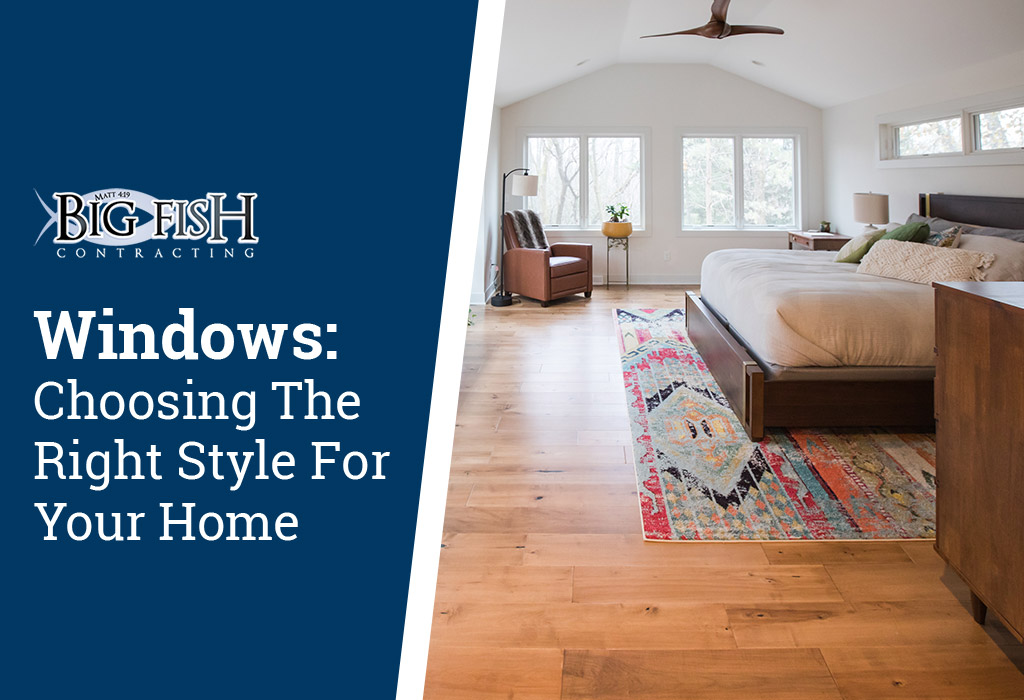A beautiful window offers so many wonderful benefits: they let light into your home, offer views to the outdoors, and help to make your space feel more open. Quality windows will even provide better insulation that can lower your energy bills, provide security from outside elements, and improve the aesthetics of your home.
Is it time to replace your windows?
If your windows are in poor condition, if they aren’t energy efficient, or if they are causing safety issues, you likely already know it’s time to switch them out.
But it can be overwhelming to look through all of the different window options available to homeowners. We worked with our window expert and developed an easy-to-follow guide to help you during the window replacement.
Step #1 – Determining whether you need new windows or replacement windows
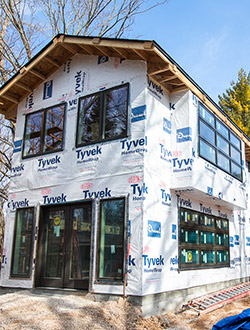
At the start of the process you’ll need to evaluate if you want to completely update the aesthetics of your home by getting entirely new windows (this could mean new shapes, adding more windows, updating the framing style, etc.) or if you simply want to replace the existing windows.
If you want to completely update the look and style of your windows, you’ll want to look into new construction windows. These windows are best for new home construction or additions because the window and frame are designed to attach to the exterior frame of a wall during construction, prior to the application of siding and trim.
If you want to replace your windows, you should check out retrofit windows, also known as replacement windows, which are specially designed to replace existing windows from the inside of the home. These windows do not require the removal of siding or trim prior to installation.
While most window replacements call for retrofit windows, there are times when new construction windows are required. For instance, if you are planning on installing new siding, a new construction window would be a better fit. If you have a broken pane or would like a better seal, retrofit windows are the way to go.
It’s important to work with a trustworthy contractor to evaluate your windows and their surrounding structure to determine if they can be replaced or if they need larger, structural repairs.
Step #2– Evaluating Energy Efficiency
As you navigate your window replacement experience, you’ll also want to prioritize energy efficiency.
Energy-efficient windows help to regulate the temperature of your home even in the cold winter months, which in turn, will lower your energy bills.
There is even a federal tax credit offered for qualified, low-energy windows purchased through 2021. But you can’t always trust labels that say “energy efficient” on them; to identify which windows are truly energy-efficient, look for Energy Star approved windows.
These days, it’s much easier to have energy-efficient windows because most manufacturers have started prioritizing energy efficiency by adding low-E coatings, argon gas glazing, and more.
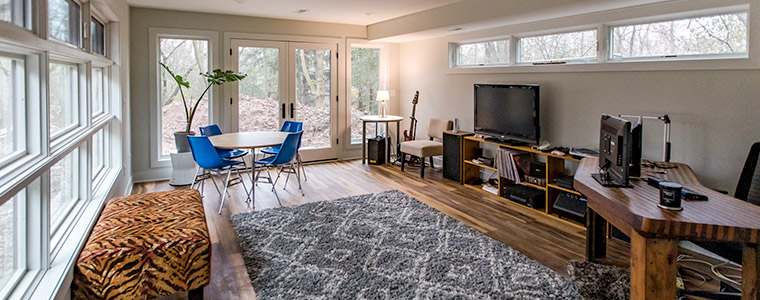
Step #3 – Selecting Your Window Style
Varying window styles will provide different amounts of light, different types of ventilation, and will handle differently.
Single-Hung or Double-Hung Windows
Hung windows are made of two panes that are vertically stacked and can slide up and down to open and close. With single-hung windows, the lower pane can slide upward to open and downward to close while both panes can slide on a double-hung window allowing it to be opened or closed from the top or bottom.
Sliding Windows
Sliding windows move from side to side to open and close. They are usually easily removable to aid in cleaning.
Casement Windows
Casement windows are hinged at the side and open using a crank system at the bottom of the window. These windows open outward like a door and are ideal for tight spaces in your home that are hard to access.
Awning Windows
Awning windows are hinged at the top and open outward using a latch or crank system. Awning windows offer superior ventilation and unlike most other windows, can be opened in the rain as the pane protects the opening from water.
Hopper Windows
The inverse of an awning window, a hopper window is a horizontal window that is hinged at the bottom to open inward along the top. (These are typically found in basements.)
Fixed/Accent Windows
Fixed or accent windows tend to be mostly decorative, with no function to open or close them.
Custom/Combination Windows
Oftentimes, homeowners will look to customize their windows to their own unique style and function desires. Combination windows are a type of custom window; they are a series of traditional windows fitted together to create a custom look.
Projection Windows
Bay Windows:
A bay window involves a set of three panels protruding outward from the home, making a half-hexagon.
Bow Windows:
Similar to a bay window but protruding less outward from the home, a bow window often includes 4-5 panels and forms a half-oval shape.
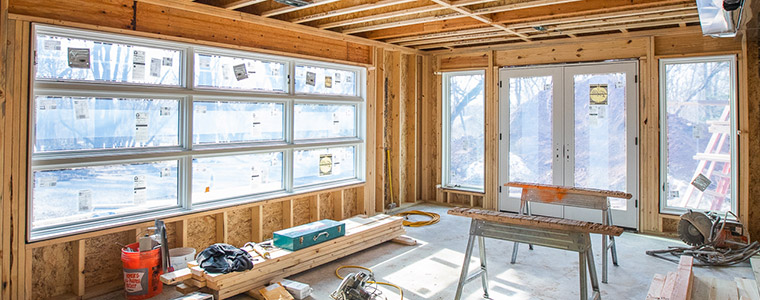
Step #4 – Selecting the Right Window Framing Material
The best framing material for your window project depends primarily on your budget, the maintenance you’re willing to take on, and the type of look you prefer. Explore framing material options below to see what matches your needs.
Vinyl Windows
Easily the most common choice for window frames, vinyl windows are low-cost, durable, easy to maintain, relatively energy-efficient, and have a wide range of customization options. When it comes to the best bang for your buck, vinyl windows are the way to go.
Wood Windows
The natural beauty of wood windows is unmatched. They are also relatively easy to customize with fresh paint or varnish and offer great insulation. However, wood windows tend to be less durable, are more high maintenance, and are susceptible to rot or weather-related decay. Because of their classic look, wood windows are often the best choice for renovating a historical home because they match their timeless style.
Fiberglass
Fiberglass windows are a newer innovation, but their popularity is rising quickly. These frames are made of glass fibers and polyester resin, making them very durable, low maintenance, energy-efficient, and sustainable. Fiberglass windows can mimic the look of other materials like wood or vinyl, but last much longer, even against harsh weather conditions. Fiberglass is more of an investment, with the price usually hovering around double that of a vinyl window.
Aluminum
Aluminum windows used to be a more popular choice, but vinyl and fiberglass options have surpassed them in popularity among residential homeowners. While aluminum windows tend to be the most budget-friendly and are relatively durable, the material’s poor insulation properties, proneness to corrosion, and less classic look tend to make vinyl, wood, or fiberglass a more popular choice.
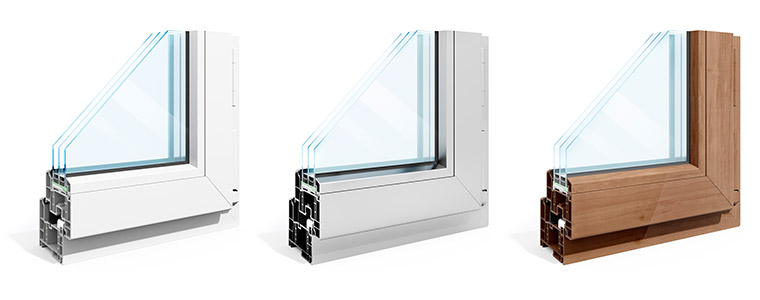
Step #5 – Selecting the Appropriate Window Glass
Once you’ve decided on the style and frame materials for your new windows, you’ll need to make a few choices regarding the type of glass used for the panes.
Number of Panes
Windows can be single, double, triple, or even quadruple paned. Most commonly, windows are double or triple-paned. The number of panes contributes to the amount of airspace in between the panes, which is directly related to how energy efficient and noise blocking they are. The more panes and air space, the better they are at insulating and stopping noise. The number of panes also affects the final price, so it comes down to your budget and your priorities.
What’s In-Between the Panes?
The area in-between windowpanes doesn’t have to be dead air. There are a number of treatments window companies can apply to make your windows even more efficient including:
- Low E (Low Emissivity) glass glaze: a very thin glaze (thinner than a single human hair, actually!) that reduces the amount of heat transfer from the glass to your home.
- Argon gas: This gas, a quite common addition to many windows, is denser than air so it increases the thermal efficiency of your window.
- Krypton gas: Krypton gas is similar to argon gas, but even denser to maximize the thermal efficiency of your window.
- Impact resistant glass: this option protects you from unwanted damages from weather, animals, or even children playing ball in the yard.
Step #6 – Analyzing Cost
When it comes to cost, the old adage is true: you get what you pay for. Depending on the quality of the brand, the material and style you choose, the size of the window, and its installation requirements, you can expect to pay anywhere from $1,000 to $2,000 for an average window.
Get the Help You Need On Your Next Window Project
As part of our mission to provide the most reliable products and services to our clients, Big Fish Contracting has partnered with Pella, Marvin, and Anderson to offer the best windows in the industry. These suppliers offer a number of window styles made with wood, fiberglass, or vinyl framing materials to add the perfect touch to any project. From awnings to casement to sliding, even fully customized windows, Pella, Marvin and Anderson are our trusted suppliers.
Big Fish Contracting has a staff of experienced window experts that are well-versed in all of the products that Pella, Marvin and Anderson offer, and are equipped to help you find the right fit for your home and budget as well as an outstanding installation team.
We’re ready to work with you, every step of the way, in finding the best window style and design for your home or business project.

